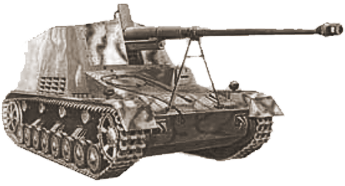Crossing the Rhine River: March 1945
The first months of 1945 witnessed some of the European War's fiercest fighting. In spite of the fanatical defensive battle waged by the Wehrmacht, during March of 1945 the situation deteriorated rapidly for Hitler's Third Reich. Even though the Red Army continued to bear the brunt of Germany's attentions, the Anglo-American led armies had finally shrugged off the lingering effects of the Battle of the Bulge and the savage fighting along Germany's western border to reach the Rhine River; the last significant geographical defensive barrier protecting the western approaches into the heart of Germany.
The Germans knew the Rhine River's importance, and prepared for the Allied advance by destroying bridges up and down the Rhine's length; all while digging in on the Rhine's east bank. British Field Marshal Bernard Law Montgomery recognized the difficulty presented by attempting to cross the broad Rhine and thus methodically prepared a massive set piece crossing of the river. Montgomery's plan featured a huge armada of transport aircraft for the planned paratroop and glider borne infantry set to spearhead the crossing effort.
As Montgomery planned however, on March 7, 1945 a small American battle group from the 9th Armored Division, under the command of Lieutenant Karl Timmerman, found the Ludendorff railroad bridge over the Rhine intact in Remagan. Acting aggressively, showing extraordinary bravery and initiative, American infantry swiftly crossed the bridge and set up positions to cover the engineers as they frantically cut German demolition cables. Meanwhile, the Commanding Officer of the 9th Armored Division, Major General John W. Leonard, having heard of Timmerman's discovery, still hesitated before diverting his entire division into protecting and consolidating the bridgehead. Supreme Allied Commander U.S. General Dwight D. Eisenhower, contrary to the overcautious image used to characterize his command since the War's end, acted decisively. Eisenhower informed General Omar N. Bradley, commander of the massive 12th Army Group "Sure, go on, Brad, and I'll give you everything we've got to hold that bridgehead."
Bradley ordered General Courtney Hodges, Commander of the U.S. First Army, to exploit the German mistakes as engineers set up pontoon bridges alongside a bridge belatedly targeted by German bombers and frogmen. Although the Remagan Bridge finally collapsed on March 17th, killing over two dozen American soldiers, it had served its purpose; Hodges First Army had unhinged the German defenses and rapidly expanded the American position on the Rhine's east bank. A furious Hitler fired Rundstedt for the last time in the war and ordered court martials for the local commanders. To the north of Remagan, Montgomery's set piece crossing over the Rhine began on the night of March 23, 1945. The assault went off with only minor hitches. The success of Montgomery's and Bradley's efforts meant the massive Allied armies in Northwest Europe, numbered over four million men, with 2,550,037 Americans and 866,575 British soldiers forming the backbone of the Allied army, faced little credible opposition as they streamed east to meet a formidable Red Army crushing through Germany's last gasp defensive efforts.
by Steven Douglas Mercatante



Post new comment